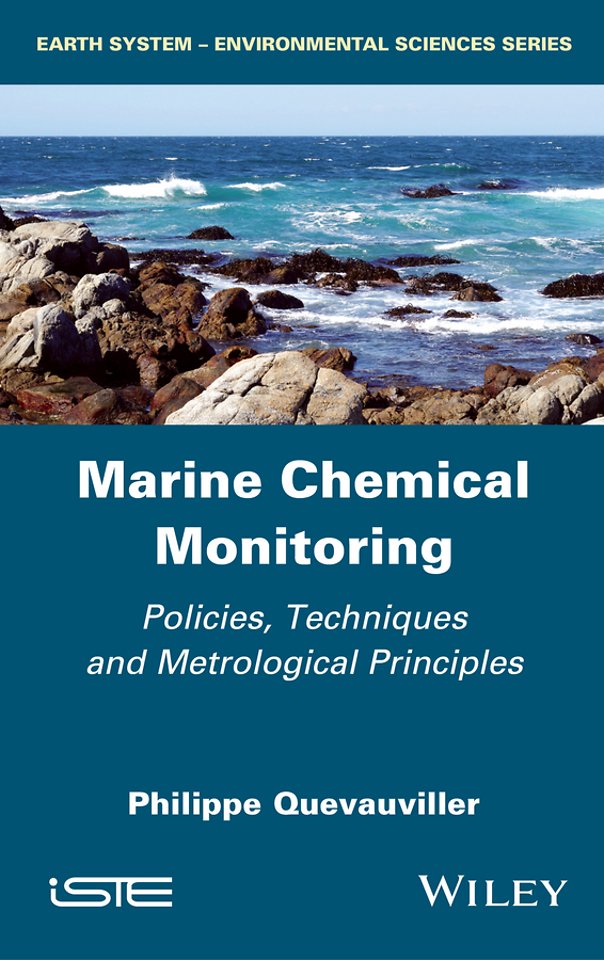

Marine Chemical Monitoring
Policies, Techniques and Metrological Principles
Gebonden Engels 2016 9781848217409Specificaties
Lezersrecensies
Inhoudsopgave
<p>Glossary xv</p>
<p>Abbreviations xxi</p>
<p>Chapter 1. Marine Monitoring: Historical Background, Regulatory Framework and Science Policy Interactions 1</p>
<p>1.1. Introduction 1</p>
<p>1.2. International institutions 3</p>
<p>1.2.1. International Council for the Exploration of the Sea 5</p>
<p>1.2.2. United Nations Environment Programme 6</p>
<p>1.2.3. Intergovernmental Oceanographic Commission of UNESCO 10</p>
<p>1.2.4. European Union 11</p>
<p>1.3. International conventions/programs 12</p>
<p>1.3.1. UN Convention on the Law of the Sea 12</p>
<p>1.3.2. London Dumping Convention 13</p>
<p>1.3.3. OSPAR Conventions 13</p>
<p>1.3.4. Helsinki Convention 16</p>
<p>1.3.5. MARPOL 17</p>
<p>1.3.6. Mediterranean Sea: Barcelona Convention 18</p>
<p>1.3.7. Bonn Agreement 19</p>
<p>1.3.8. Arctic Ocean: Arctic Monitoring and Assessment Programme 19</p>
<p>1.3.9. North East Pacific Ocean 20</p>
<p>1.3.10. North West Atlantic Ocean 21</p>
<p>1.3.11. North Sea conferences 22</p>
<p>1.3.12. Other conventions 22</p>
<p>1.4. The EU marine strategy 22</p>
<p>1.4.1. The notion of good environmental status 24</p>
<p>1.4.2. Marine strategies of the Member States 25</p>
<p>1.4.3. Monitoring in the MSFD policy context 26</p>
<p>1.5. Science policy interactions 29</p>
<p>1.5.1. Scientific foundation of environmental policies: where do we stand? 29</p>
<p>1.5.2. EU scientific framework in support of water and marine policies 31</p>
<p>1.5.3. Identification of research needs in the water policy sectors 33</p>
<p>1.5.4. Interactions with the scientific community 34</p>
<p>1.5.5. Science–based development of an integrated environmental policy 37</p>
<p>1.6. Conclusions 39</p>
<p>Chapter 2. Monitoring and Quality Assurance 41</p>
<p>2.1. Monitoring of what? 41</p>
<p>2.1.1. Selection of compartments 41</p>
<p>2.1.2. Selection of compounds 42</p>
<p>2.2. Quality of data 44</p>
<p>2.2.1. Introduction 44</p>
<p>2.2.2. Interlaboratory comparisons 45</p>
<p>2.2.3. Guidelines 47</p>
<p>2.2.4. (Certified) reference materials 48</p>
<p>2.2.5. Laboratory performance studies 49</p>
<p>2.2.6. Example: monitoring of trace metals in seawater 51</p>
<p>2.3. Certified reference materials 53</p>
<p>2.3.1. Introduction 53</p>
<p>2.3.2. Production and use of reference materials 53</p>
<p>2.3.3. CRMs for trace elements in nutrients 62</p>
<p>2.3.4. CRMs for organic non–halogenated compounds 66</p>
<p>2.3.5. CRMs for organic halogenated compounds 68</p>
<p>2.3.6. Future needs of CRMs 71</p>
<p>Chapter 3. Types of Monitoring 73</p>
<p>3.1. Classical chemical marine monitoring 73</p>
<p>3.1.1. Introduction 73</p>
<p>3.1.2. The basis and purpose of marine monitoring 74</p>
<p>3.1.3. Some considerations around classical monitoring 77</p>
<p>3.1.4. Designing a sampling program 80</p>
<p>3.1.5. Sample collection and immediate handling 82</p>
<p>3.1.6. Sample storage (short– and long–term) 83</p>
<p>3.1.7. Laboratory analyses 86</p>
<p>3.1.8. The final assessment 93</p>
<p>3.1.9. Conclusions 94</p>
<p>3.2. In situ methods 94</p>
<p>3.2.1. Introduction 94</p>
<p>3.2.2. In situ automatic analyzers 96</p>
<p>3.2.3. Passive sampling technologies 99</p>
<p>3.2.4. Spectroscopic methods 106</p>
<p>3.2.5. Electrochemical techniques 110</p>
<p>3.2.6. Sensors 113</p>
<p>3.2.7. Biological early warning systems 116</p>
<p>3.2.8. Future 119</p>
<p>3.3. Biomonitoring 121</p>
<p>3.3.1. Introduction 121</p>
<p>3.3.2. Analytical trends in chemical monitoring of marine biota 123</p>
<p>3.3.3. Main features of biota monitoring programs 128</p>
<p>3.3.4. Analytical methods 131</p>
<p>3.3.5. Integration of chemical and biological effect monitoring 136</p>
<p>3.4. Use of sediment in coastal monitoring 139</p>
<p>3.4.1. Introduction 139</p>
<p>3.4.2. Sediment monitoring in the WFD context 142</p>
<p>3.4.3. Chemical monitoring in estuaries for coastal management 142</p>
<p>Chapter 4. Analytical Methods 147</p>
<p>4.1. Trace elements 147</p>
<p>4.1.1. Introduction 147</p>
<p>4.1.2. Digestion methods 148</p>
<p>4.1.3. Preconcentration methods for seawater analysis 150</p>
<p>4.1.4. Atomic absorption and emission techniques 151</p>
<p>4.1.5. (Instrumental) neutron activation analysis 157</p>
<p>4.1.6. X–ray techniques 158</p>
<p>4.1.7. Electrochemical techniques 159</p>
<p>4.1.8. Conclusions 160</p>
<p>4.2. Chemical species 161</p>
<p>4.2.1. Introduction 161</p>
<p>4.2.2. Labile/complexed fractionation of metal species 163</p>
<p>4.2.3. Inorganic chromium species 168</p>
<p>4.2.4. Inorganic and organic arsenic species 171</p>
<p>4.2.5. Inorganic and methylated mercury species 176</p>
<p>4.2.6. Butyltin and other organotin species 181</p>
<p>4.3. Organic micropollutants 185</p>
<p>4.3.1. Introduction 185</p>
<p>4.3.2. Polychlorinated biphenyls 186</p>
<p>4.3.3. Polybrominated diphenyls ethers 189</p>
<p>4.3.4. Emerging contaminants 191</p>
<p>4.3.5. Organohalogens in water 193</p>
<p>4.3.6. Polycyclic aromatic hydrocarbons 196</p>
<p>4.4. Nutrients 197</p>
<p>4.4.1. Introduction 197</p>
<p>4.4.2. Nutrient monitoring 198</p>
<p>4.4.3. Analytical methods 199</p>
<p>Chapter 5. Conclusions: Achieving Traceability in Marine Monitoring Measurements? 205</p>
<p>5.1. Metrology in marine chemistry: traceability principles of chemical measurements 205</p>
<p>5.1.1. Meaning of traceability for chemical measurements 206</p>
<p>5.1.2. Stated references 209</p>
<p>5.1.3. Case studies illustrating metrology in marine chemistry 220</p>
<p>5.1.4. Conclusions 229</p>
<p>5.2. Policy perspectives 231</p>
<p>Bibliography 235</p>
<p>Index 283</p>
Rubrieken
- advisering
- algemeen management
- coaching en trainen
- communicatie en media
- economie
- financieel management
- inkoop en logistiek
- internet en social media
- it-management / ict
- juridisch
- leiderschap
- marketing
- mens en maatschappij
- non-profit
- ondernemen
- organisatiekunde
- personal finance
- personeelsmanagement
- persoonlijke effectiviteit
- projectmanagement
- psychologie
- reclame en verkoop
- strategisch management
- verandermanagement
- werk en loopbaan